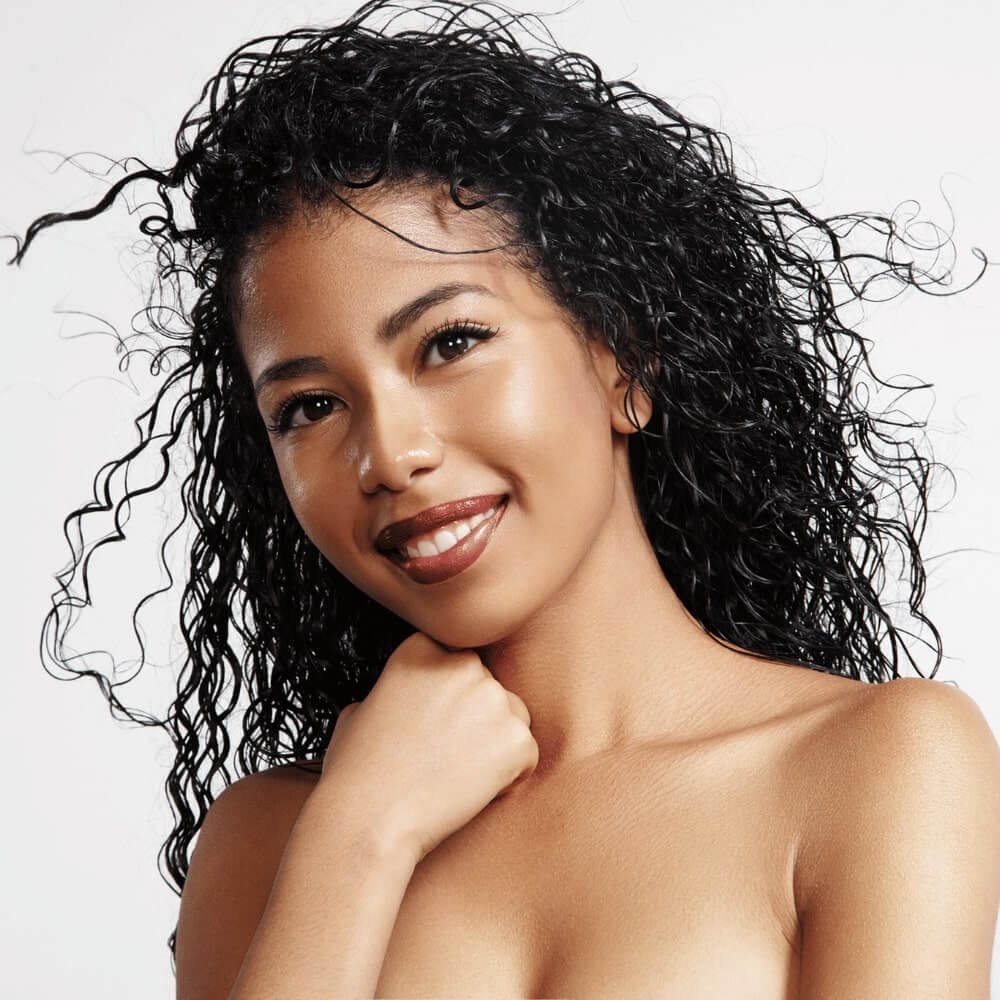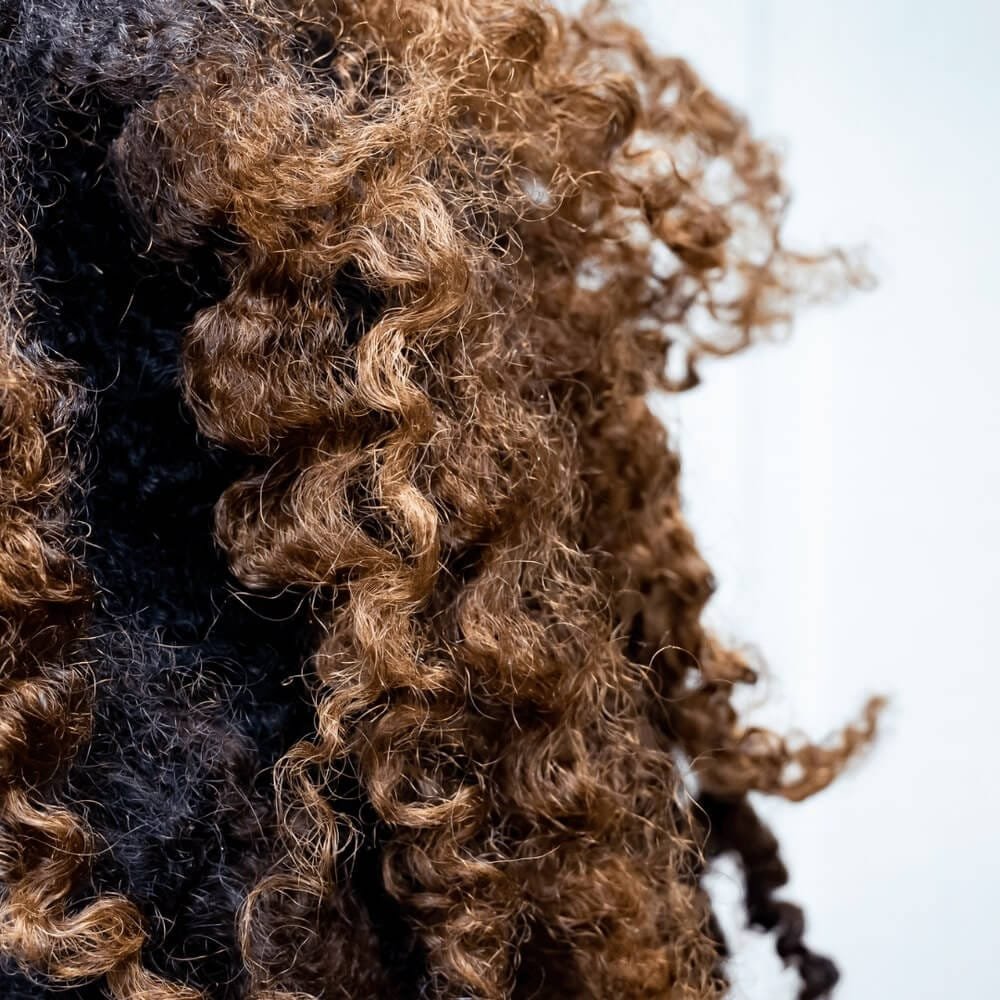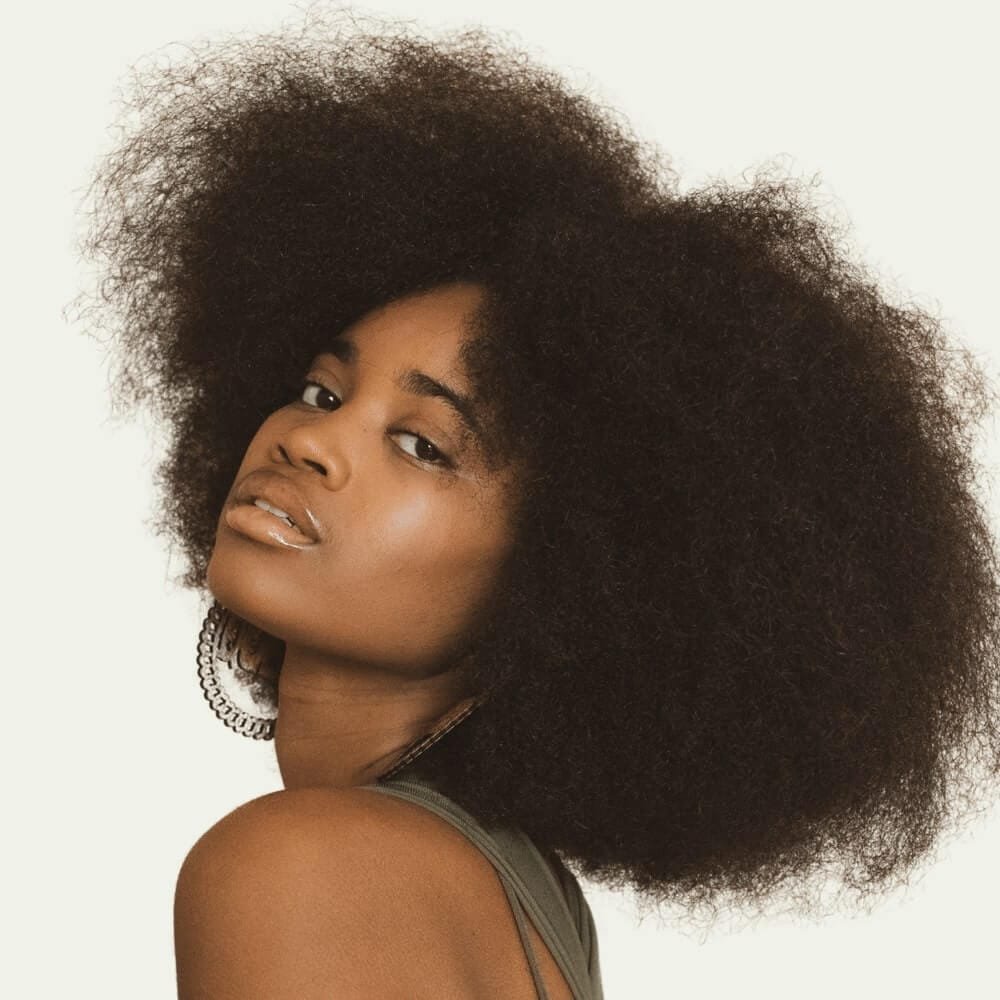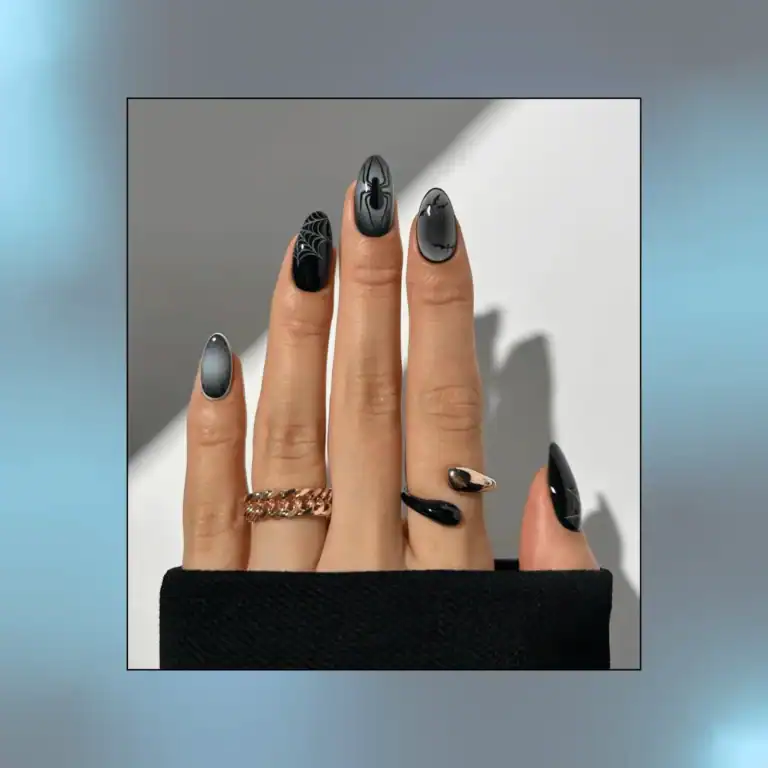Heads up! We may use affiliate links in this post. You'll never pay more, but we might earn a small commission if you buy - thanks for supporting us! See our full disclosure here.
Let’s talk about one of the most important yet misunderstood aspects of hair care—protein!
If you’ve got low porosity hair, you might feel like your strands have a mind of their own.
They’re picky about products, resistant to moisture, and sometimes just downright stubborn.
But is protein really the answer, or should you steer clear of it like a bad hair day?


We all know that healthy hair is the ultimate goal, but figuring out what your low porosity hair needs can feel like solving a puzzle.
So, before you dive into your next hair care haul or book that deep conditioning treatment, let’s get to the root of it—pun totally intended!
We’re here to break down the science, bust some myths, and help you figure out if protein should be your new BFF or a frenemy you approach with caution.
Let’s unravel this mystery, one strand at a time!
First Things First: What Is Low Porosity Hair?
Low porosity hair—aka the “I-don’t-let-anything-in” hair type—is a bit of a diva when it comes to moisture and hair care products.
The cuticles of your hair shaft are tightly packed together, making it tough for moisture and products to penetrate.
This might sound like your hair is playing hard to get, but there’s a reason for this—it’s trying to protect itself.
How To Determine Your Hair Porosity Type


Does your hair seem to ignore your favourite products, or does it take forever to dry?
If you’re nodding along, your hair might be part of the low porosity crew.
But how can you be sure?
Let’s explore some easy, at-home methods to crack the porosity code and get you one step closer to mastering your hair care routine.
The Float Test: A Quick and Easy Check
Grab a strand of clean hair (no product build-up allowed!) and drop it into a glass of water.
Now, watch closely:
Floats at the top? You’ve got low porosity hair. Your hair shaft is so tightly sealed that water has a hard time getting in, so it just chills on the surface.
Sinks slowly? That’s medium porosity, the happy middle ground.
Sinks quickly? High porosity hair alert! Your hair soaks up moisture like a sponge, which sounds great until it dries out just as fast.
The Spray Bottle Test: Seeing Is Believing
This one’s super simple. Grab a spray bottle filled with water and mist a section of your hair:
Beads of water just sit there? That’s low porosity hair saying, “No thanks, I’m good.” Your hair doesn’t absorb moisture easily, so water tends to sit on top.
Water soaks in slowly? You might have normal or medium porosity hair.
Does water disappear in a flash? High porosity hair is super thirsty, but it also loses moisture quickly.
The Product Test: When Your Hair Plays Hard To Get
Ever slather on your favourite leave-in conditioner or curl cream, only to feel like it’s just sitting on top of your hair, refusing to sink in?
This could be a sign of low porosity hair.
Hair products might feel heavy, greasy, or like they take forever to absorb because your hair shaft is more resistant to letting anything in.
The Big Question: Does Low Porosity Hair Need Protein?
Yes, your low porosity hair can need protein, but you’ve got to be VERY careful with it.
Protein is like the building blocks of strong, healthy hair, but too much of a good thing can turn your hair from defined curls to crispy, crunchy strands.
Keziah Dhamma, founder & CEO of Swirly Curly Hair says that protein can be looked at as “food for the hair”, but only recommends doing a protein treatment on low porosity hair occasionally.


Low porosity hair tends to be protein-sensitive, which means if you overload it with protein treatments, you could end up with stiff, straw-like hair.
And nobody wants that!
So, how do you know if your low porosity hair needs protein? Let’s break it down.
4 Signs Your Low Porosity Hair Needs Protein
Limp and Lifeless Strands: If your hair is looking flat and feeling weak, it might be crying out for a protein boost.
Loss of Elasticity: Healthy hair stretches a bit when you pull on it, but if your strands keep snapping, it might be time for a protein treatment.
Constant Breakage: If you’re finding more hair on your pillow than on your scalp, your hair could need protein to strengthen those fragile strands.
Lack of Definition: If your curly hair has lost its bounce and your curls just aren’t popping like they used to, protein could help bring back those defined curls.
What Proteins Should Be Used On Low Porosity Hair?
When it comes to low porosity hair, you’ve got to be picky about your protein pals.
Afope Atoyebi, a certified trichologist, says “Ideally, you want to look out for deep conditioners that contain lower weight proteins and then work your way upwards…in an ideal situation, you’d be looking to start out with some amino acids first, then move up to peptides, and then move up to hydrolyzed proteins.”


This will ensure you can track how much protein is going into your hair, and help isolate specific proteins, so you know exactly which ones your hair likes and doesn’t like.
Here’s a little bit about each of these awesome proteins:
Amino Acids: Think of amino acids as the building blocks of your hair. They’re super tiny, which means they can easily penetrate low porosity hair. Amino acids help to strengthen your hair from the inside out while also improving its moisture retention. They’re gentle enough to use regularly, so you can enjoy stronger, shinier hair without worrying about protein overload.
Peptides: Peptides are like the cool cousins of amino acids—slightly bigger, but still small enough to get into your hair shaft. They help repair damage and add some much-needed elasticity to your strands. If your low porosity hair tends to feel stiff or fragile, peptides can bring back some flexibility and bounce.
Hydrolyzed Proteins: These proteins have been broken down into smaller molecules, making them more accessible to low porosity hair. Hydrolyzed keratin, silk, or wheat proteins are excellent choices because they strengthen your hair without leaving it feeling brittle. They provide a nice balance of strength and moisture, which is exactly what low porosity hair craves.
How To Incorporate Protein Into Your Hair Care Routine
Light Protein Treatments: Start with something gentle. Products with hydrolyzed proteins are small enough to penetrate the hair shaft without overwhelming it. Look for care products that are designed specifically for low porosity hair.
Deep Conditioning Is Your Hair’s Lifesaver: After a protein treatment, follow up with a deep conditioning session. This helps to restore moisture and keeps your hair from feeling like a brillo pad!
Space Out Protein Treatments: Your low porosity hair doesn’t need protein every week. Try incorporating a protein treatment every 4-6 weeks and see how your hair responds.
DIY Protein Masks: Feeling crafty? Whip up a DIY protein mask with natural ingredients like yoghurt, avocado, or eggs. They’re free of harsh chemicals and give your hair a gentle protein boost.
RELATED: 5 DIY Hair Masks For Low Porosity Hair
Listen to Your Hair: Your hair is pretty good at telling you what it needs—whether it’s moisture, protein, or a break from too many products. Pay attention to how your hair reacts and adjust your routine accordingly.
Save on Pinterest for later?


FAQs
How Do You Fix Protein Overload in Low Porosity Hair?
Oh no, protein overload—sounds like your hair’s got a bit too much of a good thing! If your low porosity hair feels dry, brittle, or extra frizzy, it might be time to hit the reset button.
Here’s what you can do to fix the situation:
Deep Condition: Time to break out the deep conditioning treatments! Go for a rich, moisturising mask that will help restore hydration and softness. Choose a mask with lightweight oils that still offers effective moisture and conditioning without causing buildup. These will help balance out that protein overload.
Clarify: Sometimes, a good clarifying shampoo can help remove excess product buildup from your hair. Just be sure to follow up with a deep conditioning treatment to avoid stripping your hair of its natural oils.
Avoid Protein for a While: Give your hair a break from protein treatments. Stick to moisture-focused products until your hair feels more balanced and happy.
Hydrate, Hydrate, Hydrate: Keep your hair well-hydrated by using leave-in conditioners, moisturisers, and even a bit of light oil to seal in moisture. This will help counteract the effects of too much protein.
What Is the Best Homemade Protein Treatment for Hair?
DIY lovers, rejoice! You can whip up a protein treatment at home with stuff you probably already have in your kitchen.
Here’s a quick go-to recipe that’s both easy and effective:
DIY Protein Treatment Mask
Ingredients:
1 egg (for protein)
2 tablespoons Greek yoghurt (for moisture and additional protein)
1 tablespoon honey (for hydration and shine)
1 tablespoon argan oil (for added moisture and softness)
Instructions:
Mix the egg, Greek yoghurt, honey, and argan oil in a bowl until smooth.
Apply the mixture to damp hair, focusing on the ends.
Cover with a shower cap and leave it on for 20-30 minutes.
Rinse thoroughly with lukewarm water (hot water can cook the egg!), then shampoo and condition as usual.
This treatment provides a good balance of protein and moisture, helping to strengthen your hair without overloading it.
How To Balance Moisture and Protein in Hair?
Balancing moisture and protein is like finding the perfect harmony in a duet—too much of one can overshadow the other.
Here’s how to get that balance just right:
Understand Your Hair Needs: Pay attention to how your hair reacts to products. If it feels limp or weak, it might need more protein. If it’s dry and frizzy, it could be craving moisture.
Use a Balanced Routine: Incorporate products that offer both moisture and protein. Look for conditioners or treatments that provide a good mix, or alternate between moisturising and protein treatments.
Follow a Schedule: Create a hair care schedule that includes both types of treatments. For example, you might use a protein treatment once a month and a moisturising mask once a week. This helps maintain the right balance over time.
Watch for Signs: Your hair will let you know if it’s getting too much protein or not enough moisture. If you notice signs of dryness or brittleness, dial back the protein and focus on hydration.
Choose Products Wisely: Opt for products that list hydrolyzed proteins, peptides, or amino acids for protein, and rich oils or humectants like glycerin for moisture.
Final Thoughts: Is Protein the Secret to Healthy Low Porosity Hair?
Protein can definitely be part of the secret sauce to healthy hair, but with low porosity hair, it’s all about moderation.
The right protein treatments can strengthen your hair, reduce breakage, and bring back those luscious, defined curls.
Just remember, balance is everything!
Keep an eye on how your hair responds, and adjust your routine to keep those strands looking fabulous.










